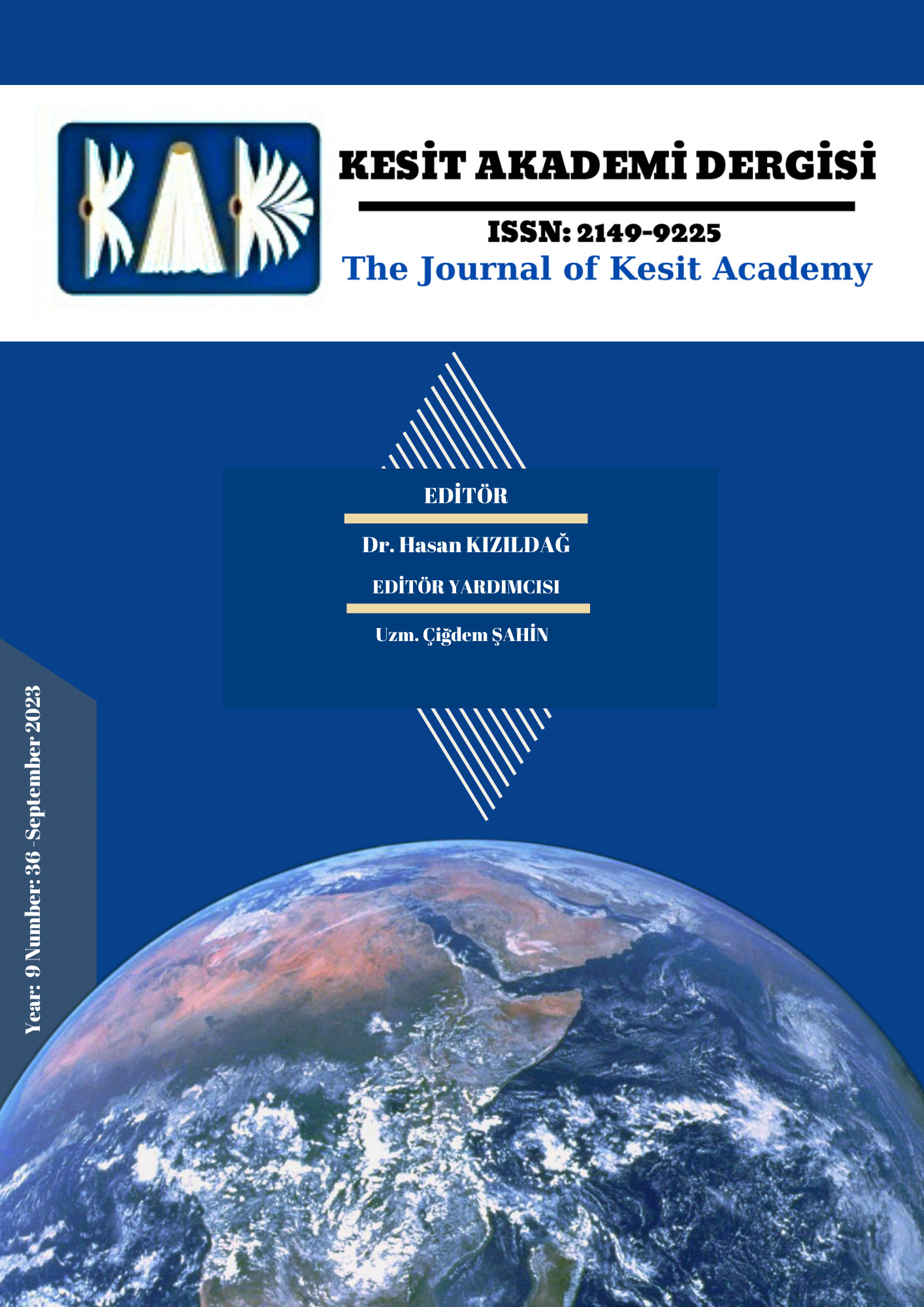Tahran Ulusal Müzesi’nden 13. yy. Lüster Çinisindeki Tekboynuz Tasviri Üzerine İkonografik Bir İnceleme
Author :
Abstract
Çeşitli kültür ve inanç sistemlerinde saflık, iffet, erdemlilik, uzun ömürlülük ve bilge yönetim sembolü tekboynuz, alnının ortasından çıkan uzun ve büyülü boynuzu ile fantastik hayvanlar grubunun zarif üyelerinden biridir. Antikçağdan itibaren varlığına ilişkin çeşitli görüşler ileri süren seyyahların kayıtları nedeniyle gerçek bir hayvan olduğu iddia edilmiş, farklı hayvan gövdeleri ve uzuvları ile birçok betimlemesi ortaya çıkmıştır. Gerçek mi yoksa hayali bir yaratık mı olduğu konusu tartışmalı olsa da ormanda yalnız yaşayan, vahşi, yakalanması zor ve çevik bir yaratık olduğu görüşü hakimdir. İsmini veren tek sivri boynuzunun ise hastalıkları iyileştiren, zehirleri tespit eden, sihirli güçlere sahip bir panzehir olduğu inancı tüm mit ve söylencelerde yaygındır. Bu makalede tekboynuz figürünün Antik Çağ eserlerindeki anlatıları yanı sıra Orta Çağ Hristiyan Sanatı ve Rönesans dönemi eserlerinde görülen ikonografik ve alegorik sahnelerdeki anlam dünyasına kısaca değinilmiştir. Batı sanatındaki alegorik tasvirlerinden farklı olarak İslam sanatında çeşitli teknik ve malzeme üzerinde karşılaşılan kanatlı tekboynuz tasvirlerinin yer aldığı kompozisyonlardaki tema ve sahneler tespit edilerek sembolik açıdan irdelenmiş; çini sanatındaki tekboynuz tasvirlerini araştırmak ise makalenin belkemiğini oluşturmuştur. Tahran Ulusal Müzesi’ndeki 13. yüzyıla tarihli 3212 envanter numaralı kabartmalı lüster tekniğindeki kırık çini parçasının bordür kompozisyonunda tespit edilen tekboynuz figürü, stilizasyon, kompozisyon şeması ve sahne sembolizmi açısından ele alınmış olup, İran’da 13- 14. yüzyıllarda üretilmiş çağdaşı çini örnekleri ile değerlendirilerek teknik ve ikonografik benzerlikleri ortaya konulmuştur. Bu bağlamda ormanların yalnız ve zarif fantastik yaratığı tekboynuz figürünün Selçuklu çini sanatındaki diğer fantastik hayvan tasvirlerine nispetle sınırlı sayıda tespit edilmiş eşsiz tasvirlerine ışık tutmak amaçlanmıştır.
Keywords
Abstract
As a symbol of purity, modesty, virtue, longevity and wise leadership in diverse cultures and belief systems, the unicorn is one of the graceful members of the group of fantastic creatures with its long and magical horn projecting from the middle of its forehead. Owing to the records of travelers where they alleged a variety of opinions about its existence since antiquity, it was claimed to be a real animal, and represented in wide-ranging depictions with bodies and limbs of different animals. Whether it is a real or an imaginary creature remains a controversial subject, yet the prevalent notion has been that it is a wild, elusive and agile creature living alone in the forest. The single and pointed horn, that is its defining feature, is commonly referred in all myths and legends as an antidote holding magical properties to cure diseases and detect poisons. In this article, narratives of the unicorn figure in Ancient artworks, as well as the semantic realm in iconographic and allegorical scenes observed in Medieval Christian art and Renaissance period works are briefly expressed. Themes and scenes in the compositions featuring the winged unicorn depictions, which unlike its allegorical depictions in Western art are observed on various techniques and materials in Islamic art, are identified and examined from a symbolic perspective. Investigating the unicorn depictions on tiles and ceramics constitutes the backbone of this article. Due to its limited examples encountered in Seljuk tiles and ceramics, and thus scarcely engaged in literature, the unicorn depiction is comparatively analyzed through its rare example identified on the lustre tile dated to the 13th century with inventory number 3212 in National Museum of Tehran. The winged unicorn figure in moulded lustre technique observed on the border of a broken tile fragment is studied within the scope of stylization, compositional lay out and scenic symbolism; to display technical and iconographic similarities, it is evaluated through the coeval tile examples produced in the 13-14th centuries in Iran. In this context, the aim is to shed light on the unicorn figure, a fantastic creature graceful and alone in the wilderness, through the unique depictions identified in limited numbers when compared to other fantastic animal depictions on Seljuk tile art.





